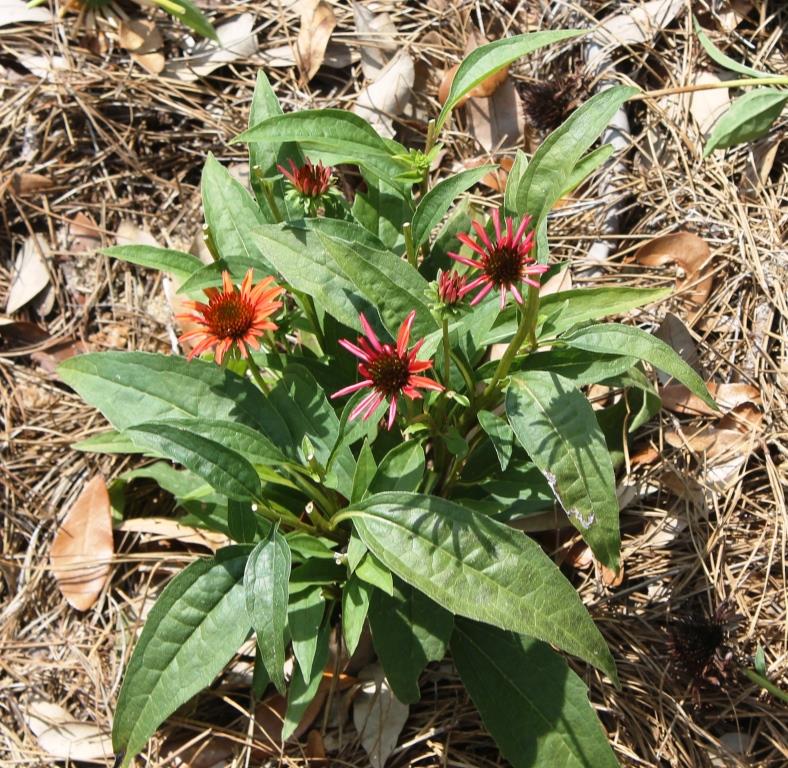
by Matthew Orwat | Jul 15, 2015

Coneflower, after deadheading, with new growth and flowers. Photo Credit Matthew Orwat, UF/IFAS Extension
During these “dog days”, full of hot temperatures punctuated with intermittent rain, gardeners can lose the motivation to get out there and get things done. One task, deadheading, can make a huge difference in the appearance of one’s landscape without a whole lot of effort.
The act of deadheading is the removal of individual blooms or flowering stalks that are past their prime. When deadheading, always trim the stem to an area above a node. The node can be determined by the presence of a leaf and its attachment to a stem. This area is known as the leaf axle.
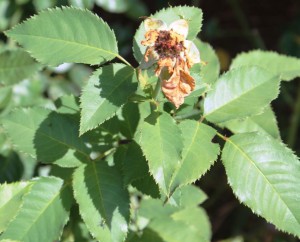
Roses before and after deadheading Photo Credit Matthew Orwat, UF/IFAS Extension

Roses before and after deadheading Photo Credit Matthew Orwat, UF/IFAS Extension
The main benefit of deadheading flowering shrubs and perennials, particularly in the spring and summer, is that removal of spent flowers promotes new growth and more flowers. It also eliminates unsightly seed stalks and decaying petals from the landscape. If trying to save seed or promote re-seeding, do not deadhead in the fall or near the terminal side of a given season for any plant.
Once proper deadheading is performed, new growth will emerge from the trimmed area. Oftentimes, this new growth is another single flower or flower cluster.
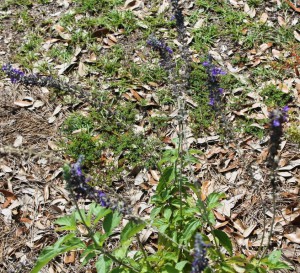
Salvia, before and after deadheading Photo Credit Matthew Orwat, UF/IFAS Extension
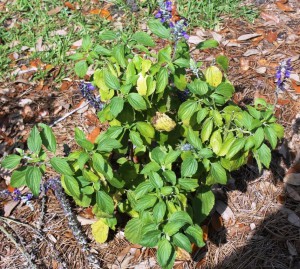
While this process is generally used for repeat flowering shrubs, such as roses, it can also be used effectively on crapemyrtle, salvia, cone flower, coreopsis, and many others.
Promote an extended bloom season in the garden and deadhead!
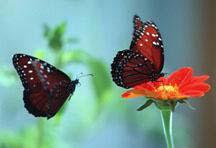
by Mary Salinas | Jul 7, 2015
Butterflies are not only beautiful to look at in your landscape; they serve as important pollinators and indicators of the health of our environment. Attracting them to your garden and incorporating some features to get them to stay and make it their home involves a little planning ahead of time for optimum results.

Queen butterfly. Photo credit: Milt Putnam, UF/IFAS.
Choose a location that provides some protection from wind. Trees and shrubs that provide wind protection also serve as a safe harbor from rain and predators. The garden should be mostly sunny with some part sun areas. Ensure that any new plantings have access to a convenient irrigation source so they can be successfully established and maintained in good health.
Now you’ll need to choose the plants. Adults feed on the nectar of many flowering trees, shrubs, perennials, and annuals and, fortunately, there are usually many choices that will meet your site requirements and your taste preferences. In order to keep the butterflies in your garden, certain plants need to be available to serve as host plants for their young. Determine which species of butterfly is common in your area and that you want to attract. Most species have very few plants on which the caterpillars can feed so those host plants need to be chosen wisely. Determine whether any of the plants you already have are host plants and they can be integrated into your butterfly garden. For example, cassia is a host plant for the Cloudless Sulphur and citrus is a host plant for the Giant Swallowtail.
In choosing your nectar plants, select those that are native or Florida-Friendly as they are lower maintenance, giving you less trouble in the long run. Choose plants that have flowers in a variety of color, size, and shape. Different butterflies like to feed at different elevations, so choose trees, shrubs, perennials, and annuals of varying heights. In order to have nectar available throughout the time when the butterflies occur, include plants that bloom at different times of the year. And include some plants that bloom from spring to late fall, like pentas or moss verbena.
Larger plants should be placed in the background with smaller plants layered in the foreground. When you plant smaller annuals and perennials, place them in masses to better attract the butterflies. Consider placing host plants in an area that is in close proximity to the nectar plants, but in an area of your garden that is not a focal point. Host plants can get quite ragged looking from hungry caterpillars!
Good maintenance practices will enhance the health of your garden. Regular fertilization and irrigation if needed will help keep your plants in bloom and healthy; healthy plants are less susceptible to disease and pests. Avoid pesticides as they may harm the very creatures you are trying to attract. Never use Bt or systemic pesticide. If you must, target a pest with lower risk oils or soaps and then only treat the affected plants. Lastly, be aware of beneficial insects that will help you achieve satisfactory control of a pest.
Now that your plants are placed there are several things to do to make your butterfly garden complete. Add a spot where water can puddle on the ground for the adult butterflies to drink. They require minerals from the soil that get dissolved in the water. Also add a rock or log in a sunny spot where butterflies can rest and sun themselves. And consider placing a comfortable place for you to sit and enjoy the beauty of your garden and its inhabitants!
For more information:
Butterfly Gardening in Florida
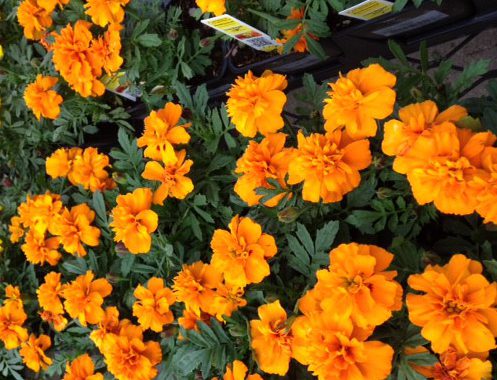
by Larry Williams | Jun 9, 2015
There are areas in most landscapes where it just is not practical or possible to bring in the tiller and create a flowerbed. A little imagination, a decorative container and appropriate plants can turn a bare spot into a splash of color.

Colorful containers bring life to your small spaces.
Consider using a container of annuals to add color to a backyard deck or a paved entrance way. Or what about that area under the tree where grass doesn’t want to grow and where it would be difficult to till without damaging the tree’s roots and the tiller? How about the dry spot where there is no irrigation but where it would be more practical to occasionally hand water a well-placed container of colorful caladiums?
A wide variety of flowering annuals work well in containers. But be sure to select plants based on the exposure. Some annuals will quickly bake from full sun exposure and others will become leggy and bloom poorly in a shady location.
Impatiens and begonias do well in shaded places and remain in flower almost continuously. Caladiums with their colorful leaves also do well in containers in shady areas.
It’s more difficult to grow container plants in full sun but there are some annuals to consider for sunny spots. A few to consider include blanket flower (Gaillardia), portulaca and salvia.
There are many other annuals that can be successfully grown in containers. There are even sun-tolerant begonia and sun coleus varieties for full-sun places.
Don’t be afraid to try something different. To learn more about this topic, please see:
Container Gardens for Outdoor Spaces
Gardening Solutions
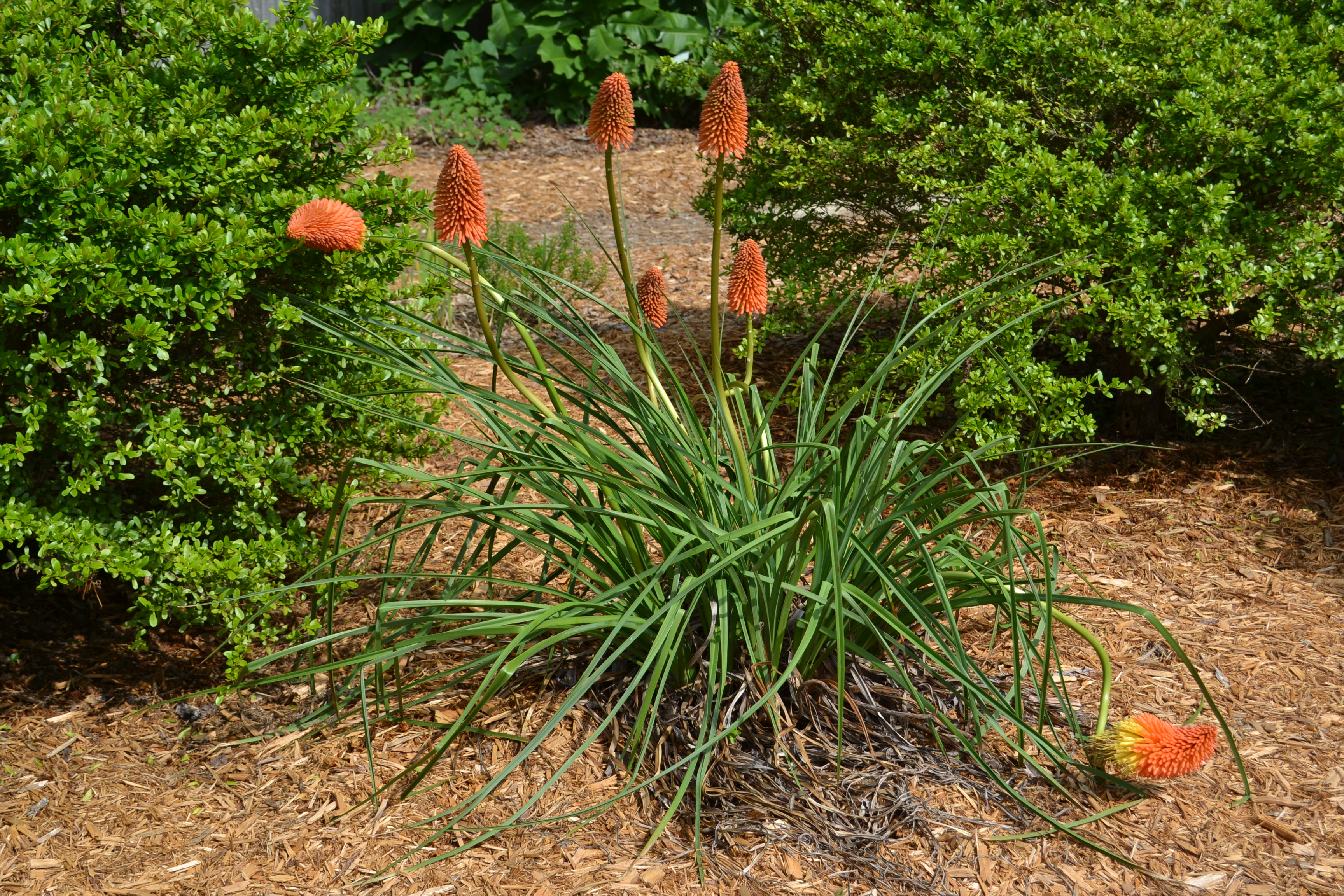
by Beth Bolles | Jun 3, 2015
If you are looking for flower colors to match the heat of June, Red hot poker, Kniphophia uvaria has the blooms that match the season. Also known as the torch lily, this perennial performs well in full sun areas with well-drained soil. Leaves about 3 feet long and 1 inch wide form a clumping plant over the years to about 3 feet in height and 2 feet in spread.
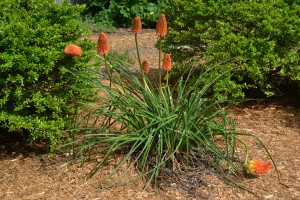
The highlight of the plant are the flowers that form in May and June. Stalks grow above the foliage holding clusters of tubular flowers that emerge red/orange and mature to yellow. Flowers are often in transition between the two colors. Remove flowers after they fade.
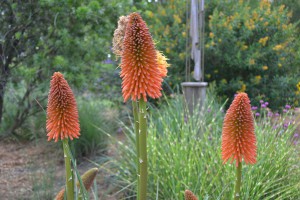
Red hot poker is a low maintenance plant along the Gulf Coast. Extreme cold may set plants back a little but clumps grow well during winters with average cold temperatures. Plants can be divided after several years but the bloom cycle may be delayed following this practice.
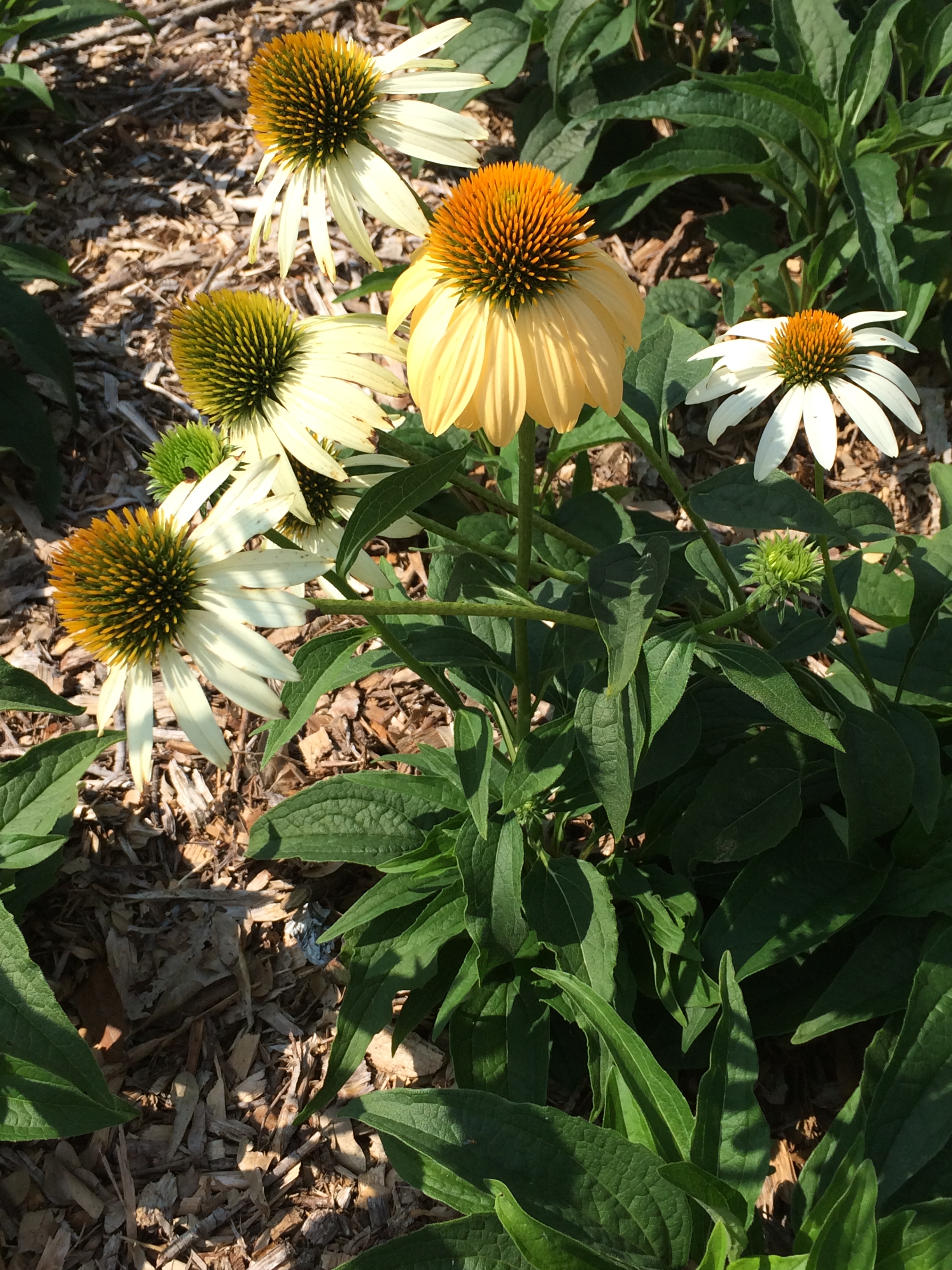
by Mary Salinas | May 12, 2015
An easy to care for perennial to add to your flower garden is the coneflower, Echinacea purpurea. The daisy-like flowers stand tall above the foliage on sturdy 2 to 4 foot stems. Blooms appear about the last part of April or the first of May in the Florida panhandle and last throughout the warm season until late fall. This Florida native reliably comes back year after year. Plant coneflower in part to full sun in rich but well-drained soil for best results.

White coneflower. Photo credit: Mary Derrick, UF/IFAS Extension.
Coneflowers are traditionally purple but many new colors and variations of their form have become available from the horticultural industry. You can find them in white, yellows, pinks, oranges, and greens as well as all shades of lavender and purple. No matter what color you choose, the blooms will attract a host of butterflies and other pollinating insects. In order to protect these delicate creatures, avoid the use of pesticides when they are present.
Once you have a few coneflowers, you will notice that the clumps will grow in time and new plants will sprout from seeds left behind by the spent blooms. In our demonstration garden, this has created a stunning display that has been allowed to take over one of the garden beds. When any one clump gets too big, the number of blooms can decrease and it may be time to dig up the clump and divide it. This is a great opportunity to expand your coneflower bed or share them with some friends or neighbors!
For more information:
Ornamentals for your landscape
Butterfly Gardening














